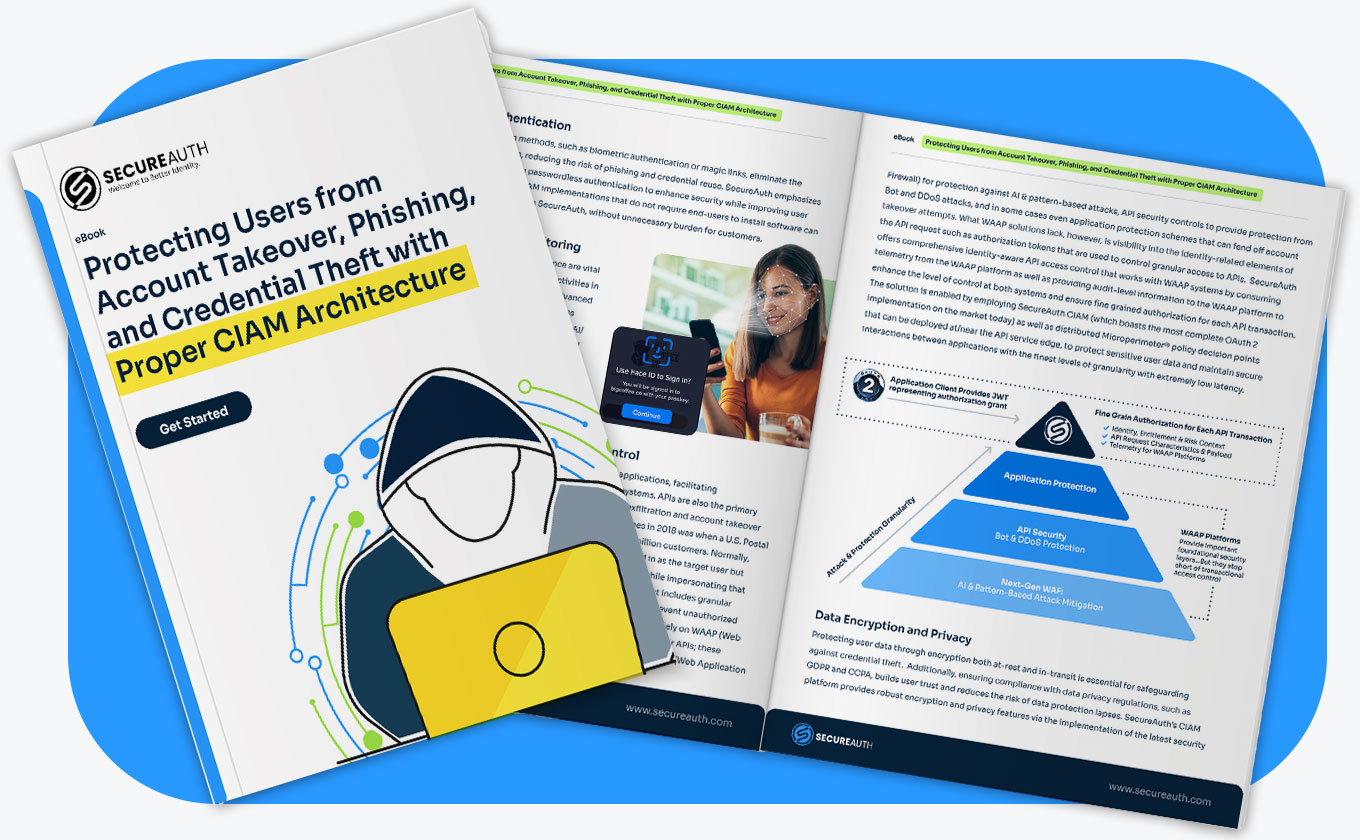Phishing is a term that’s been around for decades, but don’t let its age fool you. This classic scam is still a major threat, costing businesses billions of dollars every year. Phishing involves tricking users into giving away sensitive information, and it remains one of the most effective ways for attackers to initiate an account takeover.
Why Phishing Still Leads to Account Takeover Attacks
Phishing has evolved with technology. Today’s attacks are more sophisticated and harder to spot. Attackers use convincing fake websites, spoofed emails, and even social engineering tactics to fool users into handing over their credentials.
The result? Access to bank accounts, corporate networks, and more—often without the user even realizing it, leading to successful account takeover attacks.
The CIAM Solution to Prevent Account Takeover
A strong CIAM system can significantly reduce the risk of phishing attacks and enhance your account takeover protection:
- MFA Everywhere: Multi-Factor Authentication is a cornerstone of phishing prevention and account takeover security. By requiring multiple forms of verification, MFA makes it much harder for attackers to gain access even if they have stolen credentials.
- Real-Time Threat Detection: Advanced analytics and machine learning in CIAM systems can detect suspicious behavior and block phishing attempts before they cause harm, thereby preventing account takeover.
- User Education: Educating users on recognizing phishing attempts and integrating training into your CIAM strategy can empower them to protect their accounts, further strengthening your defense against account takeover.

Take the next step
Phishing may be an old trick, but it’s still one of the most dangerous threats out there, especially when it comes to account takeover attacks. Protect your users by implementing a CIAM system that prioritizes phishing-resistant security measures.
Ready to learn more about defending against phishing and preventing account takeover? Download our eBook on Protecting Users from Account Takover for in-depth insights.
